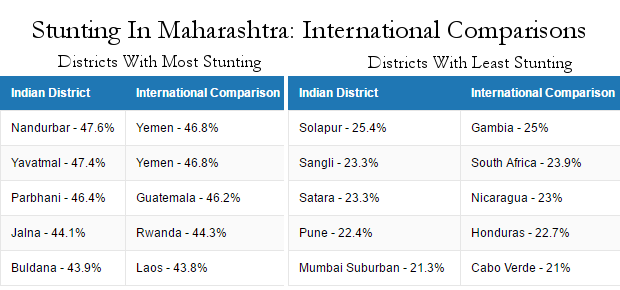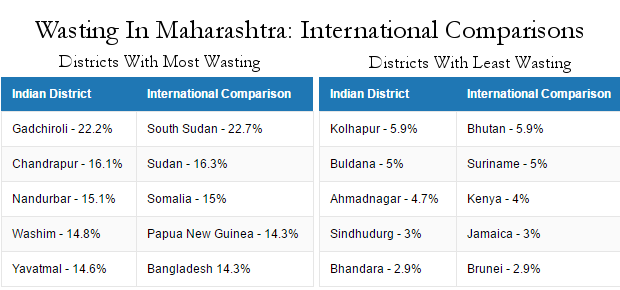Nearly half of all children under five are stunted–short for their age, a sign of malnutrition–in Nandurbar (47.6%) and Yavatmal (47.4%) districts of Maharashtra, India’s most industrialised state, a rate higher than war-torn Yemen, the poorest country in the Middle East.

Children having lunch at a malnutrition treatment centre in a slum in Mumbai. Widespread malnutrition in Maharashtra was brought to the fore again with the deaths of 13 children in the last two months in the tribal district of Palghar, less than 100 km to the north of Mumbai, India’s financial capital.
Widespread malnutrition in Maharashtra was brought to the fore again with the deaths of 13 children in the last two months in the tribal district of Palghar, less than 100 km to the north of Mumbai, India’s financial capital.
Up to 22.2% of children under five are wasted–short and underweight for their age–in Gadchiroli district, a rate equivalent to poverty- and conflict-stricken South Sudan in Africa, and 55.4% of children are underweight in the district of Nandurbar, the same rate as Madhya Pradesh’s Sheopuri district, which reports India’s worst malnutrition, according to the National Family Health Survey 4 (NFHS 4).
Stunting, wasting and underweight together determine malnutrition among children. Malnutrition, which has long-term consequences on sensory, cognitive, social and emotional development, has fallen, on average, across India from 42.4% to 29.4% over 19 years, to 37.9 million children under five.

Source: National Family Health Survey 4 and World Health Organisation; figures in %
In Sangli district, 23.3% of children under five are stunted, the same rate as in South Africa, while 21.3% are stunted in Mumbai’s suburban district, equivalent to Cabo Verde, a North east African nation that recently made it to middle-income ranks, according to 2014 World Health Organization (WHO) data.

Source: National Family Health Survey 4 and World Health Organisation; figures in %
The tribal district of Gadchiroli (22.2%) and Chandrapur (16.1%) report wasting among children under five equivalent to conflict-ridden countries, such as South Sudan and Sudan.
At the other end of the scale are some cities, such as Kolhapur, where 5.9% of children under five are wasted, similar to relatively prosperous Bhutan.

(Salve is an analyst with IndiaSpend.)
This article was first published on India Spend
